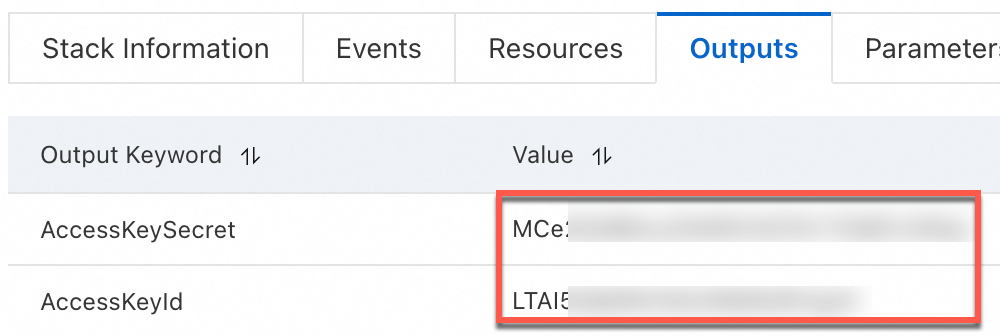このトピックでは、Object Storage Service (OSS) SDK for Pythonを使用して、バケットの作成、オブジェクトのアップロード、オブジェクトのダウンロードなどの一般的な操作を実行する方法について説明します。
前提条件
AccessKeyペアの設定
RAMユーザーのAccessKeyペアを使用して、環境変数を設定します。
Linux
CLIで次のコマンドを実行して、環境変数の設定を
~/.bashrcファイルに追加します。echo "export OSS_ACCESS_KEY_ID='YOUR_ACCESS_KEY_ID'" >> ~/.bashrc echo "export OSS_ACCESS_KEY_SECRET='YOUR_ACCESS_KEY_SECRET'" >> ~/.bashrc次のコマンドを実行して、変更を有効にします。
source ~/.bashrc次のコマンドを実行して、環境変数の設定が有効かどうかを確認します。
echo $OSS_ACCESS_KEY_ID echo $OSS_ACCESS_KEY_SECRET
macOS
ターミナルで次のコマンドを実行して、デフォルトのシェルタイプを表示します。
echo $SHELL既定のシェルタイプに基づいて操作を実行します。
Zsh
次のコマンドを実行して、環境変数の設定を
~/.zshrcファイルに追加します。echo "export OSS_ACCESS_KEY_ID='YOUR_ACCESS_KEY_ID'" >> ~/.zshrc echo "export OSS_ACCESS_KEY_SECRET='YOUR_ACCESS_KEY_SECRET'" >> ~/.zshrc次のコマンドを実行して、変更を有効にします。
source ~/.zshrc次のコマンドを実行して、環境変数の設定が有効かどうかを確認します。
echo $OSS_ACCESS_KEY_ID echo $OSS_ACCESS_KEY_SECRET
バッシュ
次のコマンドを実行して、環境変数の設定を
~/.bash_profileファイルに追加します。echo "export OSS_ACCESS_KEY_ID='YOUR_ACCESS_KEY_ID'" >> ~/.bash_profile echo "export OSS_ACCESS_KEY_SECRET='YOUR_ACCESS_KEY_SECRET'" >> ~/.bash_profile次のコマンドを実行して、変更を有効にします。
source ~/.bash_profile次のコマンドを実行して、環境変数の設定が有効かどうかを確認します。
echo $OSS_ACCESS_KEY_ID echo $OSS_ACCESS_KEY_SECRET
Windows
CMD
CMDで次のコマンドを実行します。
setx OSS_ACCESS_KEY_ID "YOUR_ACCESS_KEY_ID" setx OSS_ACCESS_KEY_SECRET "YOUR_ACCESS_KEY_SECRET"次のコマンドを実行して、環境変数が有効かどうかを確認します。
echo %OSS_ACCESS_KEY_ID% echo %OSS_ACCESS_KEY_SECRET%
PowerShell
PowerShellで次のコマンドを実行します。
[Environment]::SetEnvironmentVariable("OSS_ACCESS_KEY_ID", "YOUR_ACCESS_KEY_ID", [EnvironmentVariableTarget]::User) [Environment]::SetEnvironmentVariable("OSS_ACCESS_KEY_SECRET", "YOUR_ACCESS_KEY_SECRET", [EnvironmentVariableTarget]::User)次のコマンドを実行して、環境変数が有効かどうかを確認します。
[Environment]::GetEnvironmentVariable("OSS_ACCESS_KEY_ID", [EnvironmentVariableTarget]::User) [Environment]::GetEnvironmentVariable("OSS_ACCESS_KEY_SECRET", [EnvironmentVariableTarget]::User)
OSS SDK for Pythonのインストール
Pythonランタイム環境がインストールされている場合、次のコマンドを実行してPythonランタイム環境のバージョンを表示します。
Python用OSS SDKには、Python 2.6、2.7、3.3、3.4、3.5、3.6、3.7、3.8、またはそれ以降が必要です。
python -versionPythonランタイム環境がインストールされていない場合は、Pythonランタイム環境をダウンロードしてインストールします。
OSS SDK for Pythonをインストールします。
次のコマンドを実行して、OSS SDK for Pythonをインストールします。
pip install oss2
例
次のサンプルコードを実行してバケットを作成および削除し、オブジェクトをアップロード、ダウンロード、リスト、および削除して、OSS SDK for Pythonを使用して一般的な操作を実行する方法を学習します。
# -*- coding: utf-8 -*-
import oss2
from oss2.credentials import EnvironmentVariableCredentialsProvider
from itertools import islice
import os
import logging
import time
import random
# Configure logs.
logging.basicConfig(level=logging.INFO, format='%(asctime)s - %(levelname)s - %(message)s')
# Check whether the environment variables are configured.
required_env_vars = ['OSS_ACCESS_KEY_ID', 'OSS_ACCESS_KEY_SECRET']
for var in required_env_vars:
if var not in os.environ:
logging.error(f"Environment variable {var} is not set.")
exit(1)
# Obtain access credentials from environment variables.
auth = oss2.ProviderAuthV4(EnvironmentVariableCredentialsProvider())
# Specify the endpoint and region.
endpoint = "https://oss-cn-hangzhou.aliyuncs.com"
region = "cn-hangzhou"
def generate_unique_bucket_name():
# Query the current timestamp.
timestamp = int(time.time())
# Generate a random number from 0 to 9999.
random_number = random.randint(0, 9999)
# Specify the name of the bucket. The name must be globally unique.
bucket_name = f"demo-{timestamp}-{random_number}"
return bucket_name
# Generate a unique bucket name.
bucket_name = generate_unique_bucket_name()
bucket = oss2.Bucket(auth, endpoint, bucket_name, region=region)
def create_bucket(bucket):
try:
bucket.create_bucket(oss2.models.BUCKET_ACL_PRIVATE)
logging.info("Bucket created successfully")
except oss2.exceptions.OssError as e:
logging.error(f"Failed to create bucket: {e}")
def upload_file(bucket, object_name, data):
try:
result = bucket.put_object(object_name, data)
logging.info(f"File uploaded successfully, status code: {result.status}")
except oss2.exceptions.OssError as e:
logging.error(f"Failed to upload file: {e}")
def download_file(bucket, object_name):
try:
file_obj = bucket.get_object(object_name)
content = file_obj.read().decode('utf-8')
logging.info("File content:")
logging.info(content)
return content
except oss2.exceptions.OssError as e:
logging.error(f"Failed to download file: {e}")
def list_objects(bucket):
try:
objects = list(islice(oss2.ObjectIterator(bucket), 10))
for obj in objects:
logging.info(obj.key)
except oss2.exceptions.OssError as e:
logging.error(f"Failed to list objects: {e}")
def delete_objects(bucket):
try:
objects = list(islice(oss2.ObjectIterator(bucket), 100))
if objects:
for obj in objects:
bucket.delete_object(obj.key)
logging.info(f"Deleted object: {obj.key}")
else:
logging.info("No objects to delete")
except oss2.exceptions.OssError as e:
logging.error(f"Failed to delete objects: {e}")
def delete_bucket(bucket):
try:
bucket.delete_bucket()
logging.info("Bucket deleted successfully")
except oss2.exceptions.OssError as e:
logging.error(f"Failed to delete bucket: {e}")
# The following sample code provides an example of the main process of using OSS SDK for Python to perform common operations.
if __name__ == '__main__':
# 1: Create a bucket.
create_bucket(bucket)
# 2. Upload a local file to the bucket.
upload_file(bucket, 'test-string-file', b'Hello OSS, this is a test string.')
# 3. Download an object from the bucket.
download_file(bucket, 'test-string-file')
# 4. List objects in the bucket.
list_objects(bucket)
# 5. Delete an object from the bucket.
delete_objects(bucket)
# 6. Delete a bucket.
delete_bucket(bucket)

